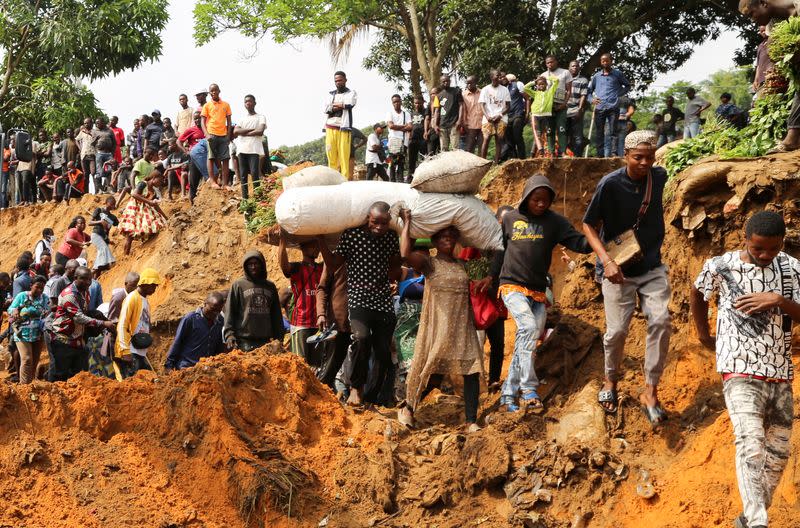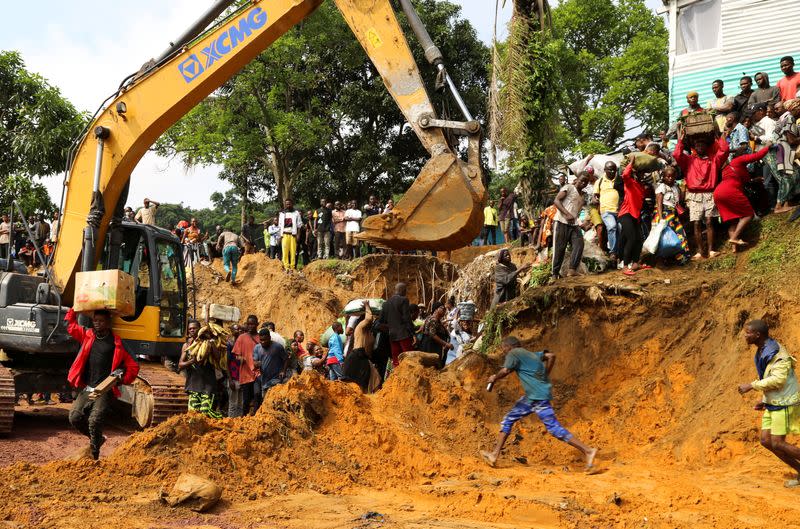Residents of Congo's capital mourn after deadly floods and landslides
By Stanis Bujakera and Benoit Nyemba
KINSHASA (Reuters) - Fidele Mbala, a primary school teacher in Democratic Republic Congo's capital Kinshasa, woke up at around 3 a.m. on Tuesday morning to the sound of torrential rain battering his tin shack.
He got out of bed and went to check for damage, a move that saved his life. Others were not so lucky.
"All of a sudden I saw the side part of the bedroom give way and fall on my wife and three of our children," said the 48-year-old, standing amid the rubble of the shack in Kinshasa's Matadi Mayo neighbourhood.
"I ran out screaming and my neighbours came to the rescue but it was too late," he said. He lost those four family members. Three of his other children survived.
The four are among at least 120 people who were killed around Kinshasa after drenching rain unleashed floods and caused landslides from Monday night through early Tuesday, according to authorities.
Congo's President Felix Tshisekedi has declared three days of national mourning.
The damage affected several parts of the city but was particularly bad in Matadi Mayo, in the Mont-Ngafula district, where a section of Congo's main national highway, the N1, was swept away.
On Wednesday large trucks full of goods were stuck on both sides of the impasse, and dozens of people climbed up and down steep dirt inclines carrying crates of vegetables and other goods on their heads - including a casket.
The government has said it will take 3-4 days to reopen the road, which connects Kinshasa to the country's main sea port of Matadi.
"I left my wife and children in Matadi and here I am stuck at the door of Kinshasa," said Yves Lutadila, a truck driver carrying second-hand clothes.
"There are also other drivers who are behind me who have fresh food. I worry for them, because after seven days they risk losing all the goods."
Once a fishing village on the banks of the Congo river, Kinshasa has grown into one of Africa's largest megacities with a population of around 15 million.
Poorly regulated rapid urbanization has made the city increasingly vulnerable to flash floods after intense rains, which have become more frequent due to climate change.
(Writing by Nellie Peyton; Editing by Bate Felix and Crispian Balmer)


